List of Authors
>>About this blog
Recent blog post
|
[Marsha Horiuchi of Edo]
January 14, 2016 16:00
It was in the New Year's pine tree that passed by a hurry. At the end of last year, I participated in the stamp rally called "Toto norenkai".
Many are located in places called downtown Tokyo (Chuo-ku, Taito-ku, Sumida-ku, Arakawa-ku, Koto-ku, Chiyoda-ku, Minato-ku).
It is a story that he made good legs regardless of the rain and wind while traveling back and forth between Edo and the present (exaggeration! I'm going alone.
"Toto norenkai" is a collection of 54 goodwill shops founded in Edo and Meiji eras and has a history of more than three generations and 100 years in Tokyo.
It is surprising that it was launched during the postwar turmoil period of 1951.
Tsukudani, eel, amazake, dumplings, glasses, fruits, laver, lacquerware, Japanese paper, tea, brush, bento, folding fan, toothpicks, etc.
Knife, Inari sushi, sweets, taiko, tempura, sukiyaki, tofu, Western cuisine, soba, footwear, Buddhist altars, dolls, duck, sake, anko pot,
Bread, kimono, hahabahabaki, tabi, hampan, bonito flakes and everyday items such as clothing, food and shelter are friendly.
Meanwhile, 26 long-established brands have shops in Chuo-ku. (Chuo-ku, \ (^ o ^)/)
http://www.norenkai.net
I usually stopped by several shops, but in the future it seems that I will go more easily.
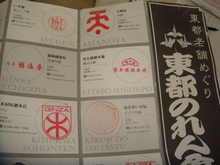 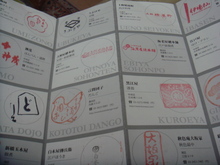
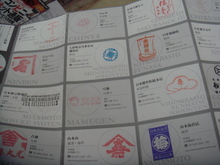 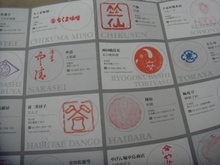
※Click the above photo to increase it.
Other areas| Shopping and shopping information| Ningyocho, Hamacho, Higashinihombashi area| Tsukuda, Tsukishima, Kachidoki and Harumi areas| Nihonbashi, Kyobashi and Yaesu areas| History, culture| Tsukiji, Shintomi, Minato area| Kayabacho, Hatchobori, and Shinkawa areas
Page top▲
[Shiraji]
January 14, 2016 14:00
This time, even if you say that you walk in the ward world, the ward world is clear on the Harumi Canal and Sumida River, so you just take a walk along the river. Most sections are the ward border with Koto-ku and the ward border with Sumida-ku near Ryogoku Bridge.
However, this course has a wonderful view, and there are many historical interests in the area along the river, so we recommend that you try it at least once.
Even if you walk slowly, you can get away from the hustle and bustle of the car, get off in the sun, have lunch while watching a cruise ship, or go off the course and combine it with a historical walk.
We also recommend a boat cruise that combines the Nihonbashi River, Kanda River, Tokyo Bay, and Odaiba, which departs and arrives at Nihonbashi in a slightly different sense from a walk.
(http://suito.or.jp/) (in Japanese).
You can either go up or down the Sumida River, but we recommend a route to the upstream where you will walk while looking at the Sky Tree.
Originally, it should be starting from the International Passenger Terminal at Harumi Wharf facing Rainbow Bridge, which is the corner of Chuo-ku, but there are almost no sidewalks along the Harumi Canal, and Harumi will be an Olympic Village for the Tokyo Olympic and Paralympic Games, so the starting point will be Tokyo Metro Yurakucho Line and Tozuei Oedo Station.
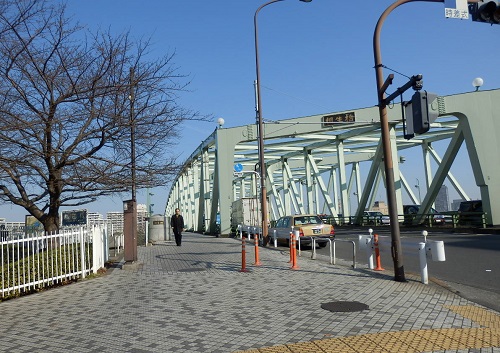
◎Aioi Bridge Nishizume
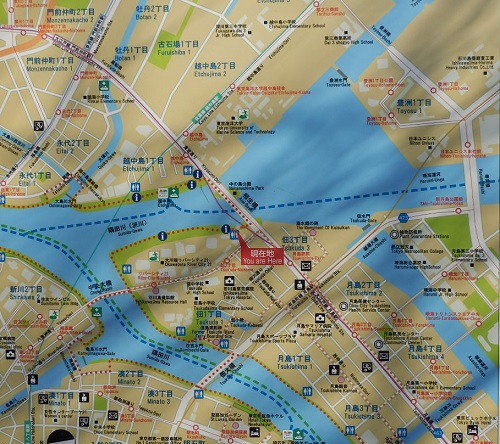
◎Tsukuda Island Map
Originally, the current Tsukishima and Harumi districts were reclaimed land, and during the Edo period it was on the sea with only a few Kojima such as shallows, Tsukuda Island, and Ishikawajima. In other words, the Eitai Bridge was the mouth of the Sumida River, the first bridge was Edo Bay, and the Sumida River was to Eitai Bridge.
Minatomachi and Akashicho (because the scenery is similar to Akashi in Hyogo Prefecture) indicate that this area was once the sea.
Tsukuda Island is an area with an old history, such as Sumiyoshi-jinja Shirine and Bon Odori, as Ieyasu Tokugawa brought fishermen from Tsukuda Village in Settsu (Osaka) to live there.
Ishikawajima is now a popular area as a pioneer in waterfront "Okawabata River City 21" high-rise housing group, but it is the site of the Ishikawajima Shipyard (currently IHI), which was once opened by the Mito Domain. In the Edo period, there was a "Hitoshishoro" created by the proposal of Heizo Hasegawa, a pirate.
"Human Ashojo" is a facility that forcibly enforces non-stayers and prisoners, acquires skills such as carpenters, fittings, paints, etc., and works as a general contractor to rehabilitate them, and gives them wages. It seems to have been a facility that also leads to modern criminal policies that combine security measures and rehabilitation facilities, such as getting a regular job after leaving.
When you pass through Ishikawajima Park along the Harumi Canal, you will see the beautiful "Chuo-ohashi Bridge" of Shahari Bridge.
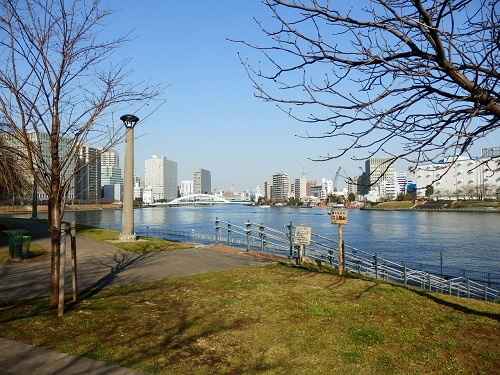
◎Ishikawajima Park
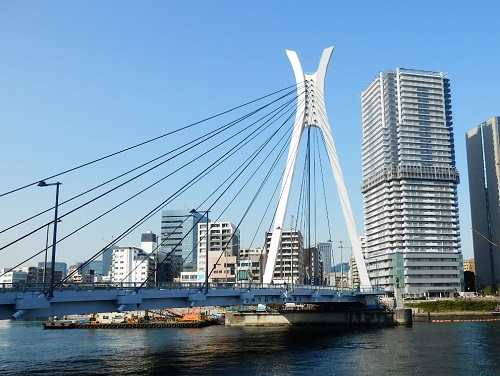
◎Chuo-ohashi Bridge
The opening of the Chuo-ohashi Bridge was not much noise on August 26, 1993, as it was the same day as the Rainbow Bridge.
Since the Sumida River has partnered with Seine, France in 1989, and the design of this "Chuo-ohashi Bridge" is a French design company, Jack Sirak, the mayor of Paris, is located on the upstream side of the central pier. The sculpture named "Messenger" by Osschkin as a sign of friendship is enshrined.
Since the statue is facing the river side, it is easy to see from the boat descending the Sumida River.
When you cross the Chuo-ohashi Bridge, you can go to the Sumida River Terrace.
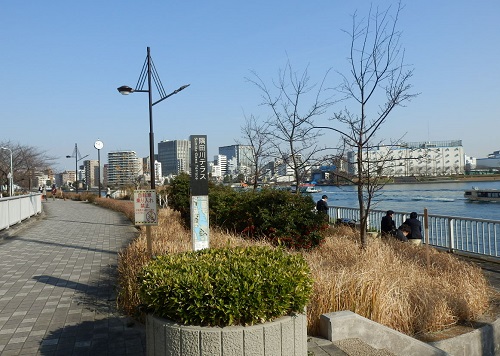
◎Sumida River Terrace
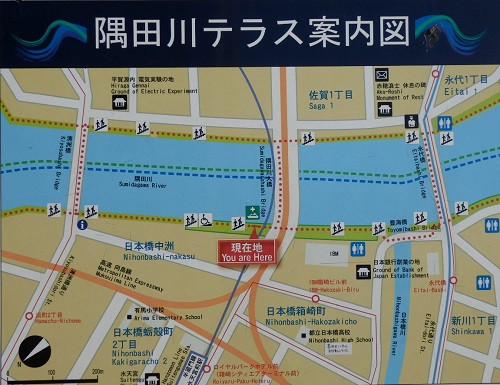 ◎Sumida River Terrace Map ◎Sumida River Terrace Map
From here, except for crossing the Toyomi Bridge over the Nihonbashi River at the end of the Eitai Bridge, you can walk straight upstream along the Sumida River to Ryogoku Bridge. The sky tree is beautiful.

◎Eitai Bridge

◎Toyomi Bridge
On the other side, you can see the beautiful Kiyosu Bridge, which is said to have imitated the suspension bridge of Cologne, on the Sumida River Ohashi Bridge, and on the other side of the Matsuo Basho, Basho-an, located in narrow road to the interior, the largest bridge on the Onagi River, which transported salt from Gyotoku during the Edo period.
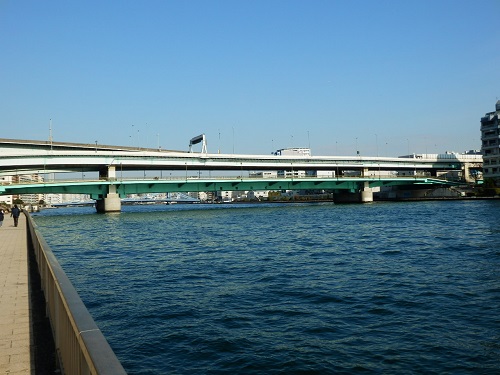
◎Sumida River Ohashi

◎Kiyosu Bridge
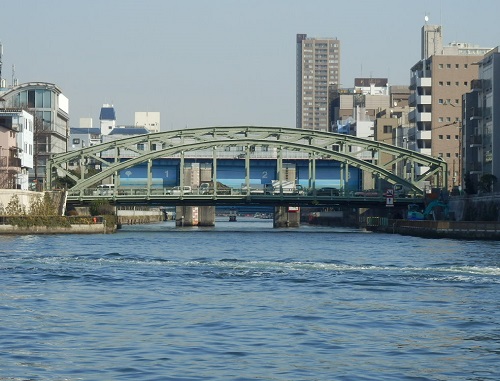
◎Onagi River, Mannen Bridge
 ◎Bashoan Historic Site Observation Garden ◎Bashoan Historic Site Observation Garden
Cruise ships on the Sumida River come and go, and ukiyo-e paintings depicting the customs of the Edo period are drawn on the walls of dike in promenade, where modern and past cross.
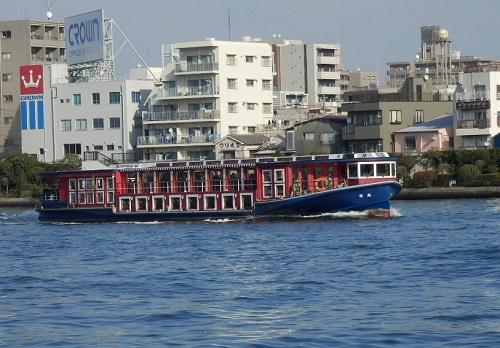
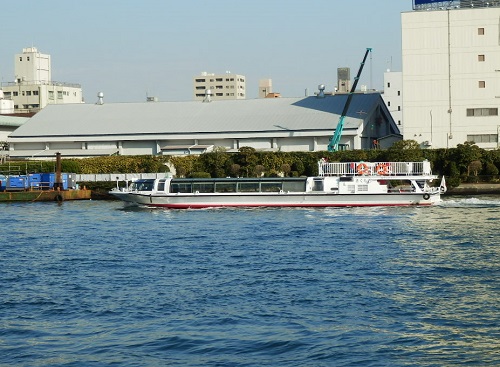
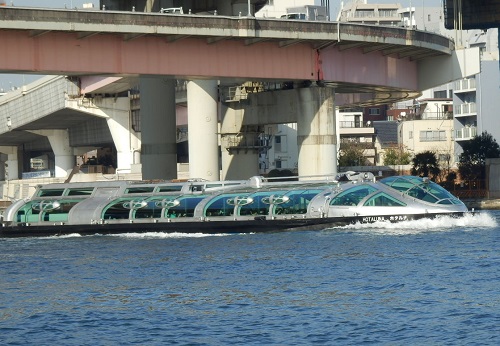
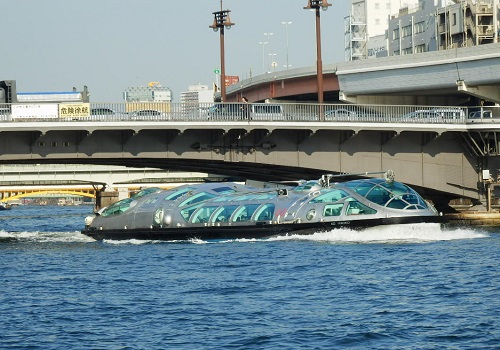
◎Cruise ship
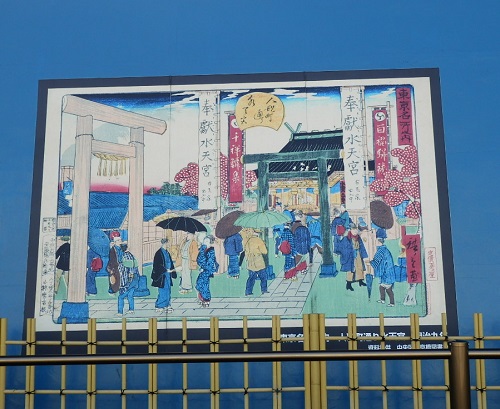
◎Suitengu Ukiyo-e
After passing Shinohashi, once the sky tree, which had been hidden until now, appears again from the valley of the building, it will arrive at the end of Ryogoku Bridge.
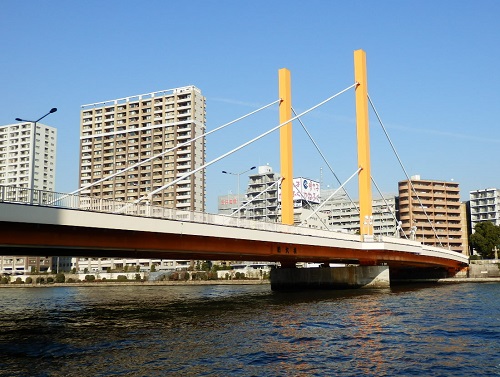
◎Shinohashi

◎Ryogokubashi
[CAM]
January 14, 2016 12:00
Horibe Yasubei Takeyuki Monument
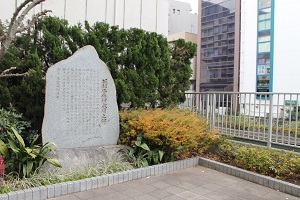
Born in 1671, a child of Yajiemon Nakayama, Echigo Shibata 5000-year-old Yoshinobu Horiuchi Dojo in Genroku 1st year Edo Noenki Horiuchi Dojo in Genroku 4th year in Genroku 7th year in Baba in Takada, February 7th year in Genroku 7th year in Genroku 7th year Later, he became a retainer, Kyobashi Mizutanicho Confucian Jihei Kyobashi.
The name of the famous sword, Shinshin Shin
(Back side)
Tateyuki August 1944
Hachimachi, Horiichimachimemachi, Chuo-ku
Representative Kyoichi Okuyama
Kamejima River and Kameshima Bridge
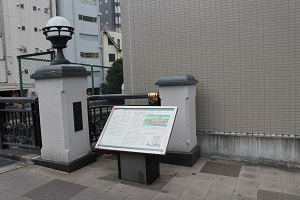
Reigishi Bridge
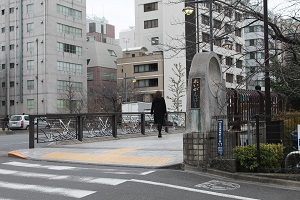
The site of the Zuiken Kawamura mansion
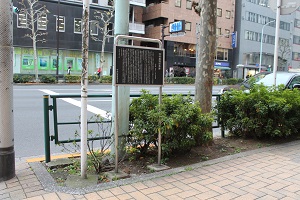
Location 1-chome 8-chome, Shinkawa
During the Edo period, there was a mansion of Zuiken Kawamura (1618-1699), who was active as a merchant of the Shogunate in this area.
Ruiken (also written as Zuiken and Suimi) was born to a farmer in Ise country and went to Edo to become a timber merchant. During the Great Edo Fire in 1657 (1657), he bought up Kiso timber and made a fortune, and after that he contracted civil engineering and construction of the Shogunate and various daimyo to build huge assets. In addition, based on its financial resources, we conducted many projects such as shipping and flood control.
One of the most important of Ruiken's achievements is that he has succeeded in reducing transportation costs and periods by cultivating the U.S. route to row the shogunate rice of Oshu and Dewa to Edo, and various rivers including the Yodo River. It is said that he worked hard on flood control in Kinai by Shuji. In his later years, he was listed in the flagship for his achievements.
According to Gesshin Saito's Takee Chronicles, Ruiken moved to Minami-Shinbori 1-chome (the area) around the Jokyo period (1684-1688), and the mansion was built in tile roofing. main gate faces the current Eitai-dori St., the back gate faces the Shinkawa River, which used to flow around Shinkawa 1-chome 7th and 9th Shinkawa, and there are four warehouses on the banks of the Nihonbashi River.
Looking at the map of the Rei Kishijima Island during the Enpo era (1673-1681), Shinkawa flows through Horiwari, which is said to have been excavated by Ruiken, and you can know a part of the business. I can do it.
March, 2003
Chuo-ku Board of Education
The birthplace of seafarer education
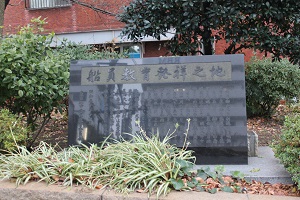
In order to advance the government's voluntary shipping policy, he advocated the urgent need for seafarer education and ordered Yataro Iwasaki, the head of the Mitsubishi company, to establish a merchant ship school in this area in November 1875. Initially, the education was conducted in the waters downstream of Eitai Bridge, which was Sumida Kawaguchi and a key point of maritime traffic at that time, with Narumimaru being moored into a school building and everyone moving on board, but this was a modern seafarer education. It was the beginning of
Over the next 100 years, the achievements of merchant ship education that began here have greatly contributed to the development of shipping, which was the cornerstone of Japan's modernization, but today's historical mission has changed, It has been passed on to the current Tokyo Shosen University in Etsunakajima, Koto-ku.
November, 1975
Chuo-ku, Tokyo Board of Education
[Dimini ☆ Cricket]
January 14, 2016 09:00
"Shin Miura" is a famous shop for "water cooking" in Tsukiji 1-chome.
Hakata's main store is a long-established store of Hakata's specialty chicken water daki, founded in 1910.
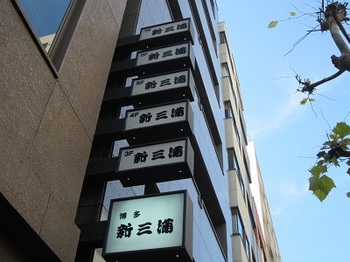
This lunch menu is "Oyakodon".
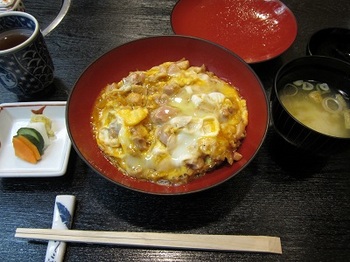
He specializes in chickens, and the softness of the chicken, the fluffyness of the eggs entangled with it, the sweet and spicy seasoning, and wonderful
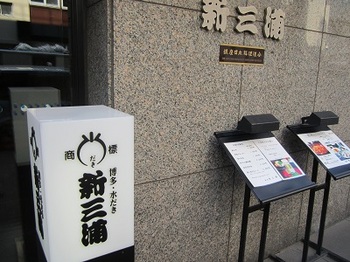
It is a recommended shop that you come regularly.
The address is Shin Miura Building, 1-8-1 Tsukiji, Chuo-ku (red in  the map below) the map below)
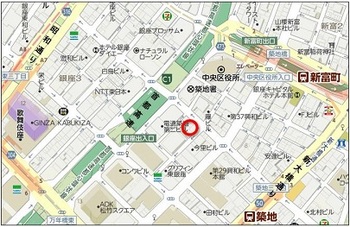
     
[Satoken]
January 13, 2016 20:00
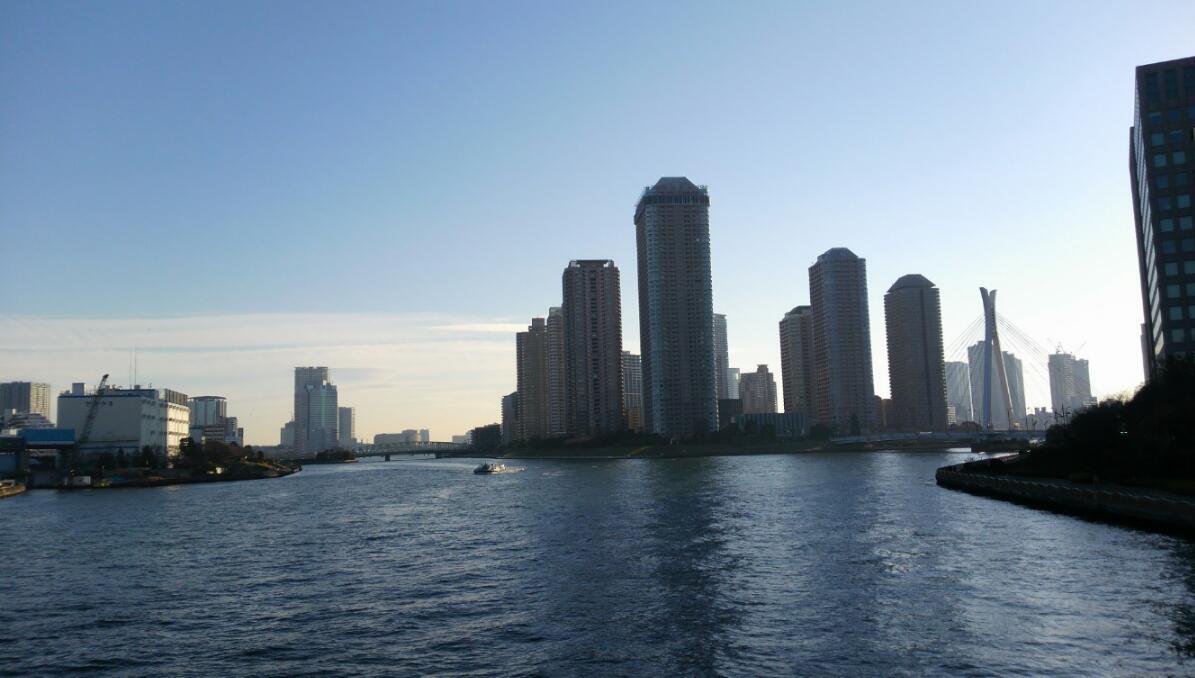
This is a page of the scenery of the beginning of the year 2016.
It was warm outside of the season and sweated when I walked.
It's a landscape near the riverside.
I don't need any extra words.
I look forward to seeing you again this year.
[Dimini ☆ Cricket]
January 13, 2016 16:00
A 1-minute walk from Exit 2 of JR Shin-Nihonbashi Station, we had "Tenei Soba" at Nihonbashi Fukushimakan MIDETTE, an antenna shop in Fukushima Prefecture.
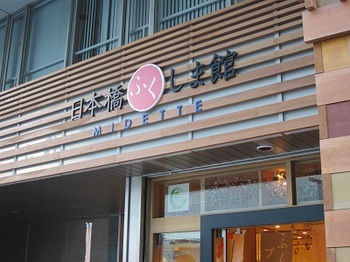
It's "Wariko soba." The scent of soba was very good.

The tempura "Yakon" was also delicious.
Yacon is a perennial plant of the Asteraceae family, which looks like sweet potatoes, but the texture is crisp and looks like yamaimo.
Originally it was not a Japanese vegetable, it was made in the mountains of Andes.
It seems to be made in Tenei Village, Fukushima Prefecture.
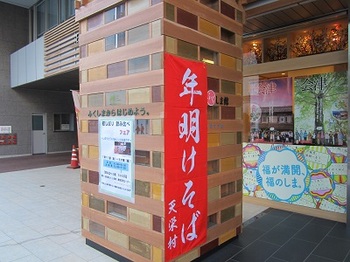
The address of Nihonbashi Fukushimakan MIDETTE is on the 1st floor of Yanagiya Taiyo Building 4-3-16 Nihonbashi Muromachi.
Click here for HP ⇒ http://midette.com/
Click here for the introduction of Tenei Yacon ⇒
http://www.vill.tenei.fukushima.jp/soshiki/6/yacon.html
     
|
Links
|












